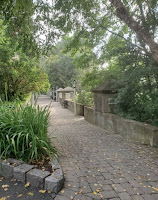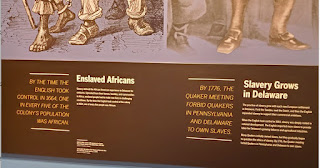“…my most sincere respects, and accept yourself assurances of my constant affection, and my prayers that a genial sky and propitious gales may place you after a pleasant voyage in the midst of your friends.” Thomas Jefferson to Pierre du Pont 1802
In 1799 Pierre-Samuel du Pont de Nemours and two sons left France to settle in the United States. This voyage would alter the course of American history. Pierre had been elevated to nobility because of his position with Louis XVI as an economist, secretary to the Assembly of Notables and his assistance in crafting the 1783 Treaty of Versailles that ended the American Revolution. The journey was motivated by the fact that he had been imprisoned during the French Revolution in 1792 and only escaped the guillotine because of the death of Robespierre. After reimprisonment along with his son Eleuthere, in 1797 he made plans to leave the country.
Family legend has it that Eleuthere Irenée du Pont, while hunting in 1800, noted the poor quality of American gunpowder. In France he had trained under Antoine Lavoisier at the Royal Powder Works and he selected a location on the Brandywine River, accessible to transportation and sufficient water power, to establish a gunpowder operation. He purchased the land in 1801 for $6,700. The company prospered and in the 1860s supplied 50% of the gunpowder used in the Civil War.
The American ancestral home of the du Ponts has come to be known as Chateau Country because of its general landscape with rolling hills and streams and its elegant estate museums. Nestled in the Brandywine Valley of Northern Delaware, mere miles from Philadelphia, Pierre hoped to create a community for French exiles and Eleuthere hoped to found a viable company. Today visitors can trace the family trail and have a unique vacation filled with fine dining, magnificent views and historic house and garden tours all with an international flair.
Chronologically Hagley Museum and Library should be your starting point. Situated on the Brandywine’s shores, the restored gunpowder mill complex consists of the first du Pont family home, built on 65-acres in 1802. The museum interprets the history of du Pont’s Eleutherian Mills, the family and early industrial technology. A narrated bus tour, a must, guides you along the Powder Yard Trail with stops at the worker’s quarters and several demonstration sites. Highlights of a visit to the current 235-acre site include the first office, the largest Osage Orange tree in America, an orientation video, “Industry on the Brandywine” and a number of interactive exhibits. hagley.org
Until January 5, 2020 “Costuming the Crown” will be on view. A series of galleries thematically display costumes from the Netflix series, “The Crown”, as well as extensive production information, videos and memorabilia. www.winterthur.org
The 1,077-acre Longwood Gardens is one of the most renowned botanical gardens in the country. The complex features 11,000 plants and trees, a 4-acre conservatory with 20 interior gardens and a half-mile greenhouse. An exterior waterfall and fountains can be enjoyed from benches that line the paths. A schedule of events is available online. Note: Longwood is in Kennett Square, PA. www.longwoodgardens.org
There are no more perfect accommodations for visiting the area or a romantic getaway than The Inn at Montchanin Village. The inn, the entire village of Montchanin, is made up of eleven meticulously restored historic homes with 28 rooms and suites dating from 1799 to 1910. The village was once part of a du Pont estate situated on a former Indian trail at the juncture of three roads. Amenities include designer linens, canopy beds and upscale bath products. Defining architectural elements, interior stone walls, fireplaces, front porches and private gardens add to the luxury experience. The Inn is a designated Historic Hotel of America.
Wilmington is particularly ideal for a Philadelphia getaway. It is 30-minutes and a world and lifestyle away. www.visitwilmingtonde.com










































